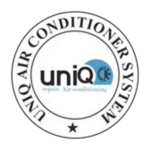Energy-Efficient AC Repair: Cooling Comfort with Sustainability
Energy-Efficient AC Repair Air conditioning (AC) systems have become indispensable for maintaining comfort during scorching summers. However, these systems can consume a significant amount of energy, leading to higher utility bills and increased carbon emissions. Energy-efficient AC repair is a sustainable solution that not only helps you reduce your environmental impact but also lowers your energy costs while providing optimal cooling comfort. In this comprehensive guide, we will explore the importance of energy-efficient AC repair, common signs that your AC system may need it, the repair process, and tips for maintaining energy-efficient cooling.
Chapter 1: The Significance of Energy-Efficient AC Repair
1.1 Sustainability
Reducing energy consumption through energy-efficient AC repair is a crucial step toward sustainability and minimizing your carbon footprint.
1.2 Cost Savings
Energy-efficient repairs can lead to significant cost savings over time by lowering your energy bills.
1.3 Enhanced Comfort
Well-maintained, energy-efficient AC systems provide consistent and comfortable indoor temperatures, ensuring your home remains a haven during the hottest months.
Chapter 2: Signs Your AC System Needs Energy-Efficient Repair
Before proceeding with energy-efficient AC repair, it’s essential to recognize the signs that indicate your system may need attention:
2.1 Reduced Cooling Efficiency
If your AC system struggles to maintain the desired temperature or takes longer to cool your space, it may be time for repair.
2.2 Increased Energy Bills
A sudden spike in your energy bills, especially during peak cooling season, can signal an efficiency problem with your AC system.
2.3 Inconsistent Cooling
Uneven cooling, with some rooms feeling warmer or colder than others, is a sign that your AC system may need repair.
2.4 Strange Noises or Odors
Unusual noises or unpleasant odors emanating from your AC system can indicate mechanical issues that require attention.
2.5 Frequent Cycling
An AC system that frequently turns on and off in short cycles may be experiencing efficiency problems.
Chapter 3: The Energy-Efficient AC Repair Process
Energy-efficient AC repair involves a thorough inspection and maintenance process to optimize your system’s performance. Here are the general steps involved:
3.1 System Assessment
A qualified HVAC technician will assess your AC system, including the compressor, condenser, evaporator coils, and ductwork, to identify areas that need improvement.
3.2 Cleaning and Maintenance
Dust and debris can accumulate on the evaporator and condenser coils, reducing efficiency. The technician will clean and perform maintenance to ensure these components are operating optimally.
3.3 Refrigerant Check
The refrigerant level will be checked and adjusted if necessary to ensure your AC system cools efficiently.
3.4 Air Duct Inspection
Leaky or damaged air ducts can lead to energy waste. The technician will inspect and seal any leaks to improve efficiency.
3.5 Thermostat Calibration
Calibrating the thermostat ensures accurate temperature control, preventing your AC system from overworking or underperforming.
3.6 Filter Replacement
Clogged or dirty air filters can restrict airflow, making your AC system less efficient. The technician will replace these filters to improve performance.
3.7 Fan Motor and Belt Check
The fan motor and belts will be inspected for wear and tear, as these components play a critical role in air circulation and efficiency.
3.8 Testing and Verification
After repairs and maintenance, your AC system will undergo testing to ensure it operates efficiently and provides consistent cooling.
Chapter 4: Tips for Maintaining Energy-Efficient Cooling
To extend the benefits of energy-efficient AC repair and maintain optimal cooling efficiency, consider the following tips:
4.1 Regular Maintenance
Schedule annual professional maintenance to catch issues early and keep your AC system running efficiently.
4.2 Clean Air Filters
Regularly clean or replace air filters to ensure proper airflow and reduce strain on your AC system.
4.3 Seal Leaky Ducts
Periodically inspect and seal any leaks in your air ducts to prevent energy loss.
4.4 Set Thermostat Wisely
Program your thermostat to match your schedule, lowering the temperature when you’re home and raising it when you’re away to save on energy.
4.5 Shade Outdoor Unit
Provide shade for the outdoor AC unit to reduce heat absorption and improve its efficiency.
4.6 Upgrade to Energy-Efficient Components
Consider upgrading to energy-efficient components, such as high-efficiency air filters or a programmable thermostat.
Chapter 5: Conclusion
Energy-efficient AC repair is a sustainable and cost-effective way to maintain cooling comfort in your home while reducing your environmental impact and energy bills. Recognizing the signs that your AC system needs attention, scheduling regular maintenance, and following energy-saving tips can help you enjoy the benefits of an efficient AC system year-round. By investing in energy-efficient AC repair and implementing maintenance practices, you can ensure that your home remains a cool and comfortable oasis while also contributing to a greener and more sustainable future.
Air conditioning (AC) systems have become indispensable for maintaining comfort during scorching summers. However, these systems can consume a significant amount of energy, leading to higher utility bills and increased carbon emissions. Energy-efficient AC repair is a sustainable solution that not only helps you reduce your environmental impact but also lowers your energy costs while providing optimal cooling comfort. In this comprehensive guide, we will explore the importance of energy-efficient AC repair, common signs that your AC system may need it, the repair process, and tips for maintaining energy-efficient cooling.
Chapter 1: The Significance of Energy-Efficient AC Repair
1.1 Sustainability
Reducing energy consumption through energy-efficient AC repair is a crucial step toward sustainability and minimizing your carbon footprint.
1.2 Cost Savings
Energy-efficient repairs can lead to significant cost savings over time by lowering your energy bills.
1.3 Enhanced Comfort
Well-maintained, energy-efficient AC systems provide consistent and comfortable indoor temperatures, ensuring your home remains a haven during the hottest months.
Chapter 2: Signs Your AC System Needs Energy-Efficient Repair
Before proceeding with energy-efficient AC repair, it’s essential to recognize the signs that indicate your system may need attention:
2.1 Reduced Cooling Efficiency
If your AC system struggles to maintain the desired temperature or takes longer to cool your space, it may be time for repair.
2.2 Increased Energy Bills
A sudden spike in your energy bills, especially during peak cooling season, can signal an efficiency problem with your AC system.
2.3 Inconsistent Cooling
Uneven cooling, with some rooms feeling warmer or colder than others, is a sign that your AC system may need repair.
2.4 Strange Noises or Odors
Unusual noises or unpleasant odors emanating from your AC system can indicate mechanical issues that require attention.
2.5 Frequent Cycling
An AC system that frequently turns on and off in short cycles may be experiencing efficiency problems.
Chapter 3: The Energy-Efficient AC Repair Process
Energy-efficient AC repair involves a thorough inspection and maintenance process to optimize your system’s performance. Here are the general steps involved:
3.1 System Assessment
A qualified HVAC technician will assess your AC system, including the compressor, condenser, evaporator coils, and ductwork, to identify areas that need improvement.
3.2 Cleaning and Maintenance
Dust and debris can accumulate on the evaporator and condenser coils, reducing efficiency. The technician will clean and perform maintenance to ensure these components are operating optimally.
3.3 Refrigerant Check
The refrigerant level will be checked and adjusted if necessary to ensure your AC system cools efficiently.
3.4 Air Duct Inspection
Leaky or damaged air ducts can lead to energy waste. The technician will inspect and seal any leaks to improve efficiency.
3.5 Thermostat Calibration
Calibrating the thermostat ensures accurate temperature control, preventing your AC system from overworking or underperforming.
3.6 Filter Replacement
Clogged or dirty air filters can restrict airflow, making your AC system less efficient. The technician will replace these filters to improve performance.
3.7 Fan Motor and Belt Check
The fan motor and belts will be inspected for wear and tear, as these components play a critical role in air circulation and efficiency.
3.8 Testing and Verification
After repairs and maintenance, your AC system will undergo testing to ensure it operates efficiently and provides consistent cooling.
Chapter 4: Tips for Maintaining Energy-Efficient Cooling
To extend the benefits of energy-efficient AC repair in Noida and maintain optimal cooling efficiency, consider the following tips:
4.1 Regular Maintenance
Schedule annual professional maintenance to catch issues early and keep your AC system running efficiently.
4.2 Clean Air Filters
Regularly clean or replace air filters to ensure proper airflow and reduce strain on your AC system.
4.3 Seal Leaky Ducts
Periodically inspect and seal any leaks in your air ducts to prevent energy loss.
4.4 Set Thermostat Wisely
Program your thermostat to match your schedule, lowering the temperature when you’re home and raising it when you’re away to save on energy.
4.5 Shade Outdoor Unit
Provide shade for the outdoor AC unit to reduce heat absorption and improve its efficiency.
4.6 Upgrade to Energy-Efficient Components
Consider upgrading to energy-efficient components, such as high-efficiency air filters or a programmable thermostat.
Chapter 5: Conclusion
Energy-efficient AC repair is a sustainable and cost-effective way to maintain cooling comfort in your home while reducing your environmental impact and energy bills. Recognizing the signs that your AC system needs attention, scheduling regular maintenance, and following energy-saving tips can help you enjoy the benefits of an efficient AC system year-round. By investing in energy-efficient AC repair and implementing maintenance practices, you can ensure that your home remains a cool and comfortable oasis while also contributing to a greener and more sustainable future.



 Please enter your name and phone number below, We will get back to you soon.
Please enter your name and phone number below, We will get back to you soon.